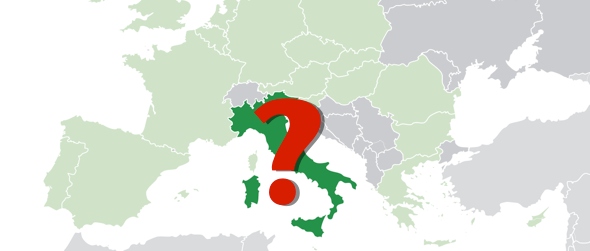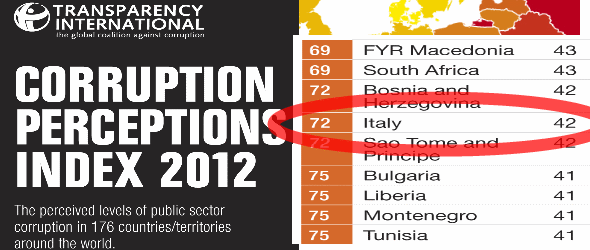In Italy, eating seasonally is quintessential. From the hills of Tuscany to Rome’s bustling markets, this culinary tradition is embraced. It’s not just about choosing fruits and veggies in season. It’s a way of life that connects people to their environment and celebrates each season’s bounty.
In spring, Italians await fresh asparagus, artichokes, and fava beans. These feature in dishes such as risotto primavera and pasta with seasonal veggies. Every bite savors the flavors, knowing they’ll soon make way for new ones.
Ah, summer. Sun-ripened tomatoes, fragrant basil, and juicy peaches. Italians indulge in Caprese salad and pasta alla Norma. Simple recipes let natural flavors shine through.
Autumn brings heartier fare. Pumpkins, mushrooms, and chestnuts in pumpkin ravioli and roasted chestnuts. Earthy flavors warm body and soul.
Winter is for comforting dishes like ribollita and polenta with sausages. Also the time for prime citrus fruits – blood oranges in sweet and savory dishes.
This tradition stands the test of time – it connects people with their food and appreciates seasonal variations. Eating seasonally supports local farmers and savors each season’s flavors and textures. Let the seasons guide your plate!
The concept of eating seasonally in Italy
Italy is known for its delicious cuisine, and the key to this? Eating seasonally! Locally grown and harvested fruits and vegetables just taste better when they’re at their peak. Italians have mastered the art of using ingredients to their fullest!
Eating seasonally in Italy is more than a practice – it’s a way of life. They understand that by aligning their meals with nature, they can enjoy the freshest flavors. Not to mention, it’s more sustainable as it reduces reliance on imports.
But seasonally eating offers more than just health benefits – it’s also a unique cultural experience! Think of strolling through summer markets, bursting with ripe tomatoes, basil, and peaches. Or visiting an Italian village in autumn to feast on freshly harvested mushrooms, chestnuts, and truffles. It connects us to our surroundings and shows us nature’s bounty!
To fully embrace seasonal eating in Italy, one must be ready to try new flavors and explore the local specialties. From Sicily’s winter citrus to Piedmont’s autumn truffles, each region has its own seasonal delights to be discovered. By indulging in these regional treats, you not only enhance your gastronomic journey but also support local farmers and producers.
Don’t miss out on the incredible flavors of eating seasonally in Italy! Make it a priority when planning your meals or dining out – incorporate more seasonal ingredients into your recipes, or explore farm-to-table options. This way, you can not only delight your taste buds but also contribute to a sustainable and mindful approach to eating. So the next time you plan to eat, go with the flow – the natural flow of fresh and delicious produce!
Benefits of eating seasonally
Eating seasonally has its benefits. It’s part of the Italian cuisine and can not only help your well-being, but also nourish your soul.
- Boost nutrition: Get more vitamins and minerals when you choose produce that’s harvested at its peak. Seasonal food is fresher and packed with essential nutrients.
- Support farmers: Shopping for seasonal ingredients often means helping out local farmers. This practice encourages sustainable agriculture while reducing carbon footprint.
- Taste explosion: Enjoy an array of flavors with seasonal produce. Freshly picked ingredients are more flavorful, aromatic, and colorful, making your meals even more enjoyable.
Additionally, the Italian way of eating seasonally includes details that make the experience special. Italians know the beauty of simplicity. They allow each ingredient to stand out without overpowering flavors or excessive decoration.
I once visited a small Tuscan village and saw locals gathering at the weekly farmers’ market. There were smiles and excitement as farmers showed off their harvest. People shared a passion for fresh produce that was evident in their dishes and happy connections around the table.
This Italian philosophy of eating seasonally is about more than just sustenance. It’s about celebrating nature’s bounty and the joys of communal dining. So, why not enjoy each bite with appreciation and embrace this Italian lifestyle for a healthier and more fulfilling life? From summer tomatoes to autumn pumpkins, Italians make every season taste like a masterpiece.
How Italians incorporate seasonal eating into their culture
Italians have a knack for seasonal eating. It’s woven into their culture! Let’s explore this relationship between Italian cuisine and the seasons.
Spring: cherries, strawberries, asparagus, peas, basil, mint.
Summer: apricots, watermelons, tomatoes, zucchini, parsley, rosemary.
Autumn: apples, pomegranates, pumpkins, mushrooms, sage, thyme.
Winter: oranges, kiwis, brussels sprouts, cauliflower, bay leaves, oregano.
The fresher, the better—that’s the Italian way. Fresh ingredients mean more flavor and nutrition. Italians also preserve seasonal produce to enjoy later. Sun-drying or canning fruits and veggies in summer and autumn keeps nature’s gifts around year-round.

Stop reading, start speaking
Stop translating in your head and start speaking Italian for real with the only audio course that prompt you to speak.
Pro Tip: Visit your local farmers’ market for the best seasonal produce. It’s a world where food is vibrant and flavors change as the seasons do. Eating seasonally is like watching a delicious drama unfold—who needs boring food?
Tips for eating seasonally
Enjoy the Italian way of eating seasonally! Opt for fresh, local produce for maximum flavour and nutrition. Visit farmers markets to support local farmers and get creative with your recipes. Preserve seasonal produce so you can still enjoy them when they’re out of season. Simplify dishes to let the natural flavours shine and respect tradition by incorporating traditional recipes into your meals. Finally, stay informed on what’s in season in your area and enjoy the abundance of flavours that each season brings! Pro Tip: Spice up your meals with recipes inspired by Italian seasonal eating.
Recipes inspired by Italian seasonal eating
| Season | Recipe |
| Spring | Pasta Primavera with Asparagus and Peas |
| Summer | Caprese Salad with Vine-Ripe Tomatoes and Fresh Basil |
| Fall | Risotto with Butternut Squash and Sage |
| Winter | Tuscan Ribollita Soup with Kale and Cannellini Beans |
Experience the unique flavors & textures of Italian cuisine! Each dish is crafted with seasonal ingredients, bringing you a truly authentic dining experience.
My visit to Italy gave me a glimpse into their passionate food culture. I had the pleasure of savoring freshly harvested truffle dishes – the aroma & flavor were truly captivating.
Embrace Italian seasonal eating – indulge in delicious possibilities while nourishing your body & soul. Forget about out-of-season produce – it’s like dating someone who only texts back when they feel like it!
Conclusion
In Italy, eating seasonally is not just a culinary tradition, it’s a way of life. Locally grown produce is embraced which creates a strong bond between food and land. This approach has multiple advantages.
- Seasonal produce is fresh and full of flavor. Farmers harvest fruits and veggies when they are ripe, offering deliciousness for every dish.
- Eating seasonal is great for health. It provides essential nutrients, vitamins, and minerals that our bodies need.
Plus, seasonal eating supports local farmers and helps the environment. It cuts down on long-distance transport, reducing greenhouse gas emissions.
To get the most out of seasonal eating:
- Visit farmers’ markets or join a CSA program.
- Learn which fruits and veggies are in season each month.
- Try new recipes with seasonal ingredients.
- Preserve extra produce for off-season use.
Let’s take a cue from Italians and start savoring the benefits of eating seasonally – one tasty dish at a time!
Frequently Asked Questions
FAQ: What does it mean to eat seasonally?
Answer: Eating seasonally means consuming foods that are naturally harvested during a particular time of the year. It involves selecting fruits, vegetables, and other produce that are at their peak freshness and flavor.
FAQ: What are the benefits of eating seasonally?
Answer: Eating seasonally offers numerous benefits. Firstly, the produce is more nutritious as it is harvested at its prime. Secondly, seasonal foods are typically more affordable and readily available, reducing reliance on imported or out-of-season goods. Lastly, it supports local farmers and reduces the carbon footprint associated with long-distance transportation.
FAQ: What are some seasonal foods in Italy?
Answer: Italy boasts a rich culinary heritage with a heavy emphasis on seasonal produce. Some popular examples include tomatoes and basil in the summer, truffles in the fall, citrus fruits in the winter, and artichokes in the spring.
FAQ: How can I incorporate Italian-style seasonal eating into my diet?
Answer: To embrace Italian-style seasonal eating, focus on using locally available, fresh ingredients. Plan your meals around the produce that is in season, experiment with traditional Italian recipes, and try to buy directly from local farmers or farmers’ markets.
FAQ: Is it difficult to find seasonal ingredients in non-agricultural areas?
Answer: While it may be more challenging to find seasonal ingredients in non-agricultural areas, many supermarkets and grocery stores now stock local and seasonal produce. Additionally, joining a community-supported agriculture (CSA) program or visiting farmers’ markets can provide access to a wider variety of fresh, seasonal ingredients.
FAQ: Are there any specific health advantages to eating seasonally?
Answer: Yes, eating seasonally can have health advantages. Locally sourced seasonal foods are generally fresher and contain higher levels of important nutrients. They are also less likely to be treated with preservatives, pesticides, or other chemicals often found in out-of-season produce.
{
“@context”: “https://schema.org”,
“@type”: “FAQPage”,
“mainEntity”: [
{
“@type”: “Question”,
“name”: “What does it mean to eat seasonally?”,
“acceptedAnswer”: {
“@type”: “Answer”,
“text”: “Eating seasonally means consuming foods that are naturally harvested during a particular time of the year. It involves selecting fruits, vegetables, and other produce that are at their peak freshness and flavor.”
}
},
{
“@type”: “Question”,
“name”: “What are the benefits of eating seasonally?”,
“acceptedAnswer”: {
“@type”: “Answer”,
“text”: “Eating seasonally offers numerous benefits. Firstly, the produce is more nutritious as it is harvested at its prime. Secondly, seasonal foods are typically more affordable and readily available, reducing reliance on imported or out-of-season goods. Lastly, it supports local farmers and reduces the carbon footprint associated with long-distance transportation.”
}
},
{
“@type”: “Question”,
“name”: “What are some seasonal foods in Italy?”,
“acceptedAnswer”: {
“@type”: “Answer”,
“text”: “Italy boasts a rich culinary heritage with a heavy emphasis on seasonal produce. Some popular examples include tomatoes and basil in the summer, truffles in the fall, citrus fruits in the winter, and artichokes in the spring.”
}
},
{
“@type”: “Question”,
“name”: “How can I incorporate Italian-style seasonal eating into my diet?”,
“acceptedAnswer”: {
“@type”: “Answer”,
“text”: “To embrace Italian-style seasonal eating, focus on using locally available, fresh ingredients. Plan your meals around the produce that is in season, experiment with traditional Italian recipes, and try to buy directly from local farmers or farmers’ markets.”
}
},
{
“@type”: “Question”,
“name”: “Is it difficult to find seasonal ingredients in non-agricultural areas?”,
“acceptedAnswer”: {
“@type”: “Answer”,
“text”: “While it may be more challenging to find seasonal ingredients in non-agricultural areas, many supermarkets and grocery stores now stock local and seasonal produce. Additionally, joining a community-supported agriculture (CSA) program or visiting farmers’ markets can provide access to a wider variety of fresh, seasonal ingredients.”
}
},
{
“@type”: “Question”,
“name”: “Are there any specific health advantages to eating seasonally?”,
“acceptedAnswer”: {
“@type”: “Answer”,
“text”: “Yes, eating seasonally can have health advantages. Locally sourced seasonal foods are generally fresher and contain higher levels of important nutrients. They are also less likely to be treated with preservatives, pesticides, or other chemicals often found in out-of-season produce.”
}
}
]
}






